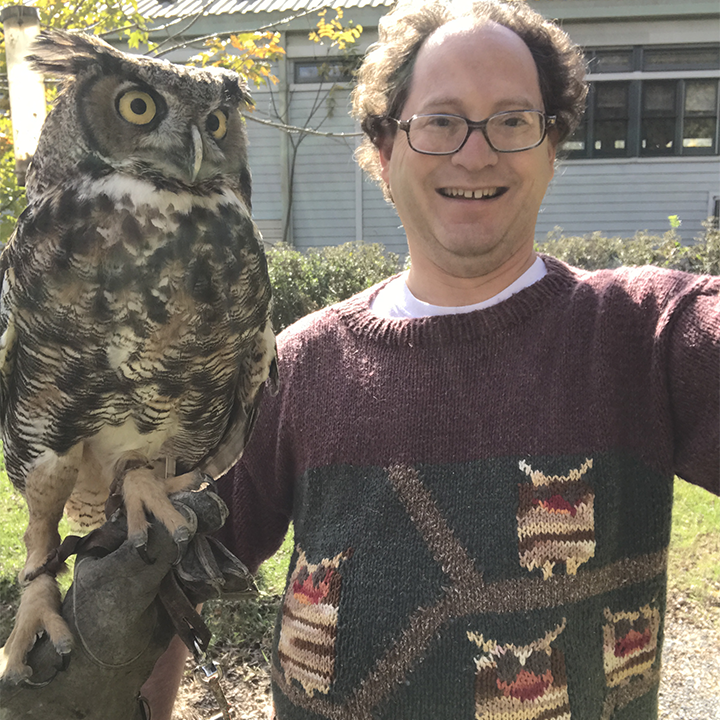Tell us a little about yourself and what you do.
I am an artist from Baltimore. When I was in college, I was studying to be a nurse, but never finished. I had wanted to learn how to knit for a long time. Soon after dropping out of college, I met the owners of a yarn shop by chance and they taught me how to knit. A year and a half later, I was designing my own sweaters.
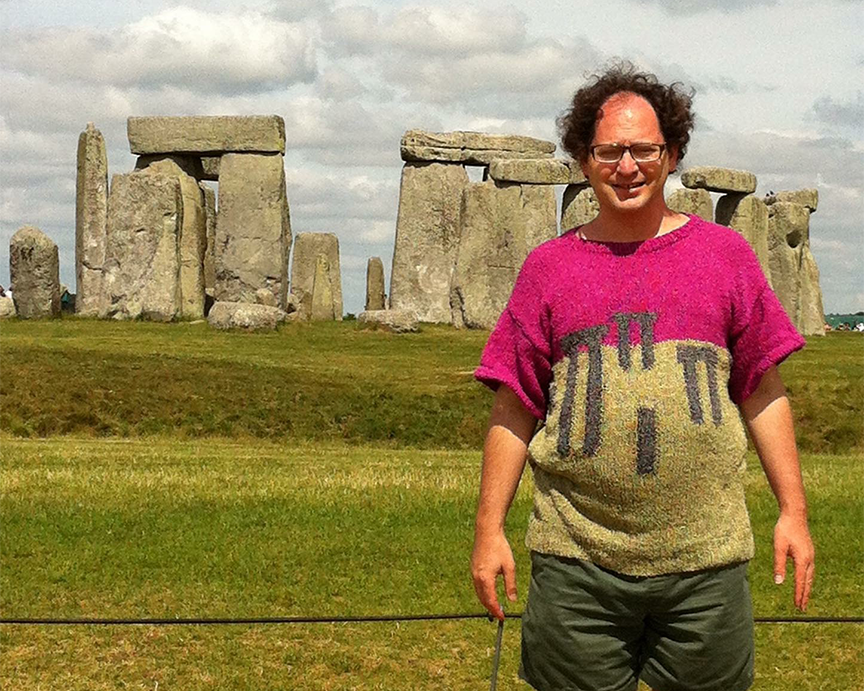
What are some things that inspire you to make sweaters?
Anything that crosses my eyes is a possible sweater. I often choose what to do next based on some upcoming travels or events.
Is there any particular sweater that you have knitted that you feel a strong connection to?
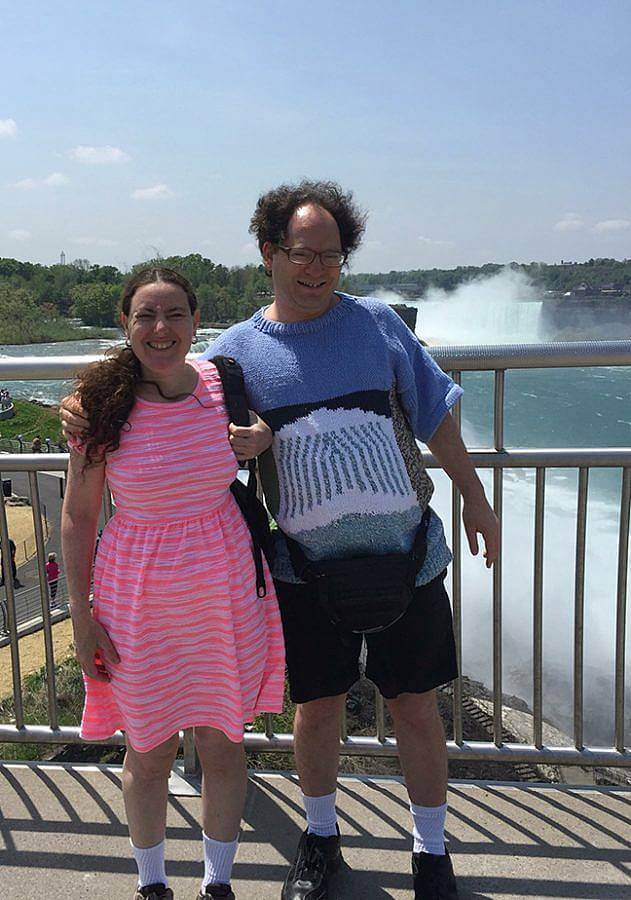
You have knitted over 160+ sweaters, do you have a preferred method of storing and cataloging them?
I store them on shelves in the chronological order I made them. This way, I know where to find any given sweater at any moment I need it.
How did you come up with the idea to make replications of your sweaters as t-shirts?
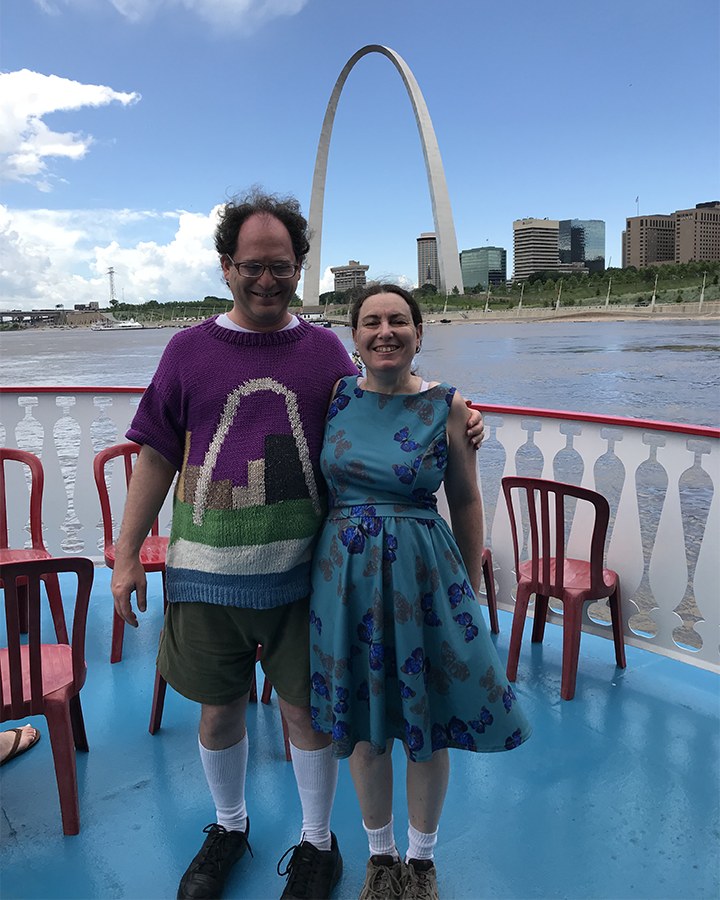
What is your favorite thing about living on the East Coast?
The East Coast has some of the most beautiful, dense vegetation that changes color in the Fall. Everywhere you go are thick forests, and there are lots of nature trails everywhere with streams and lakes, lots of mountains nearby, and the ocean. And lots of major cities with a variety of cultures all within a short drive. Unlike most of the country where the terrain looks the same for a full day of driving and cities are farther apart.
How long does it typically take you to knit a full sweater from start to finish?
At least a month. Some of them that are harder take several months.
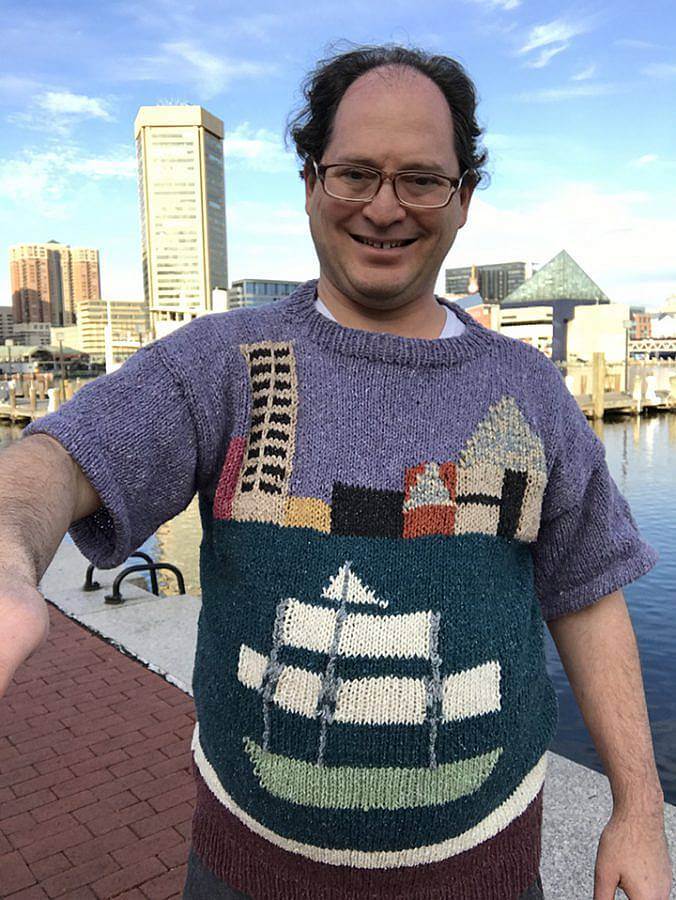
Do you have any upcoming projects that you can share with us?
I am currently working on a sweaters of the Fingerlakes in upstate New York. I also have unfinished works in progress of the Brooklyn Bridge and the Peabody Library.
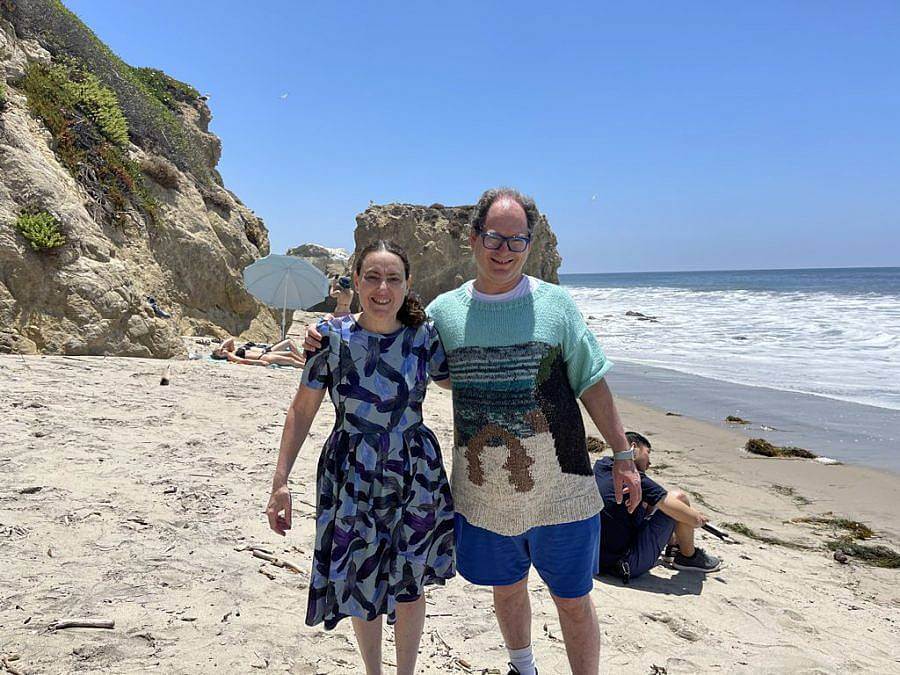
Do you have any travel plans for 2024?
Yes, I am in talks with someone about a trip to the Pacific Northwest. And I am planning on knitting a collection of sweaters of landmarks in that region for that trip and eventually taking pictures in front of those landmarks.
Interview conducted and edited by Sam Dybeck.
